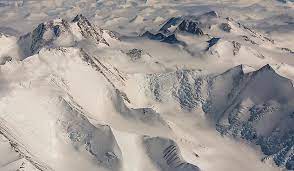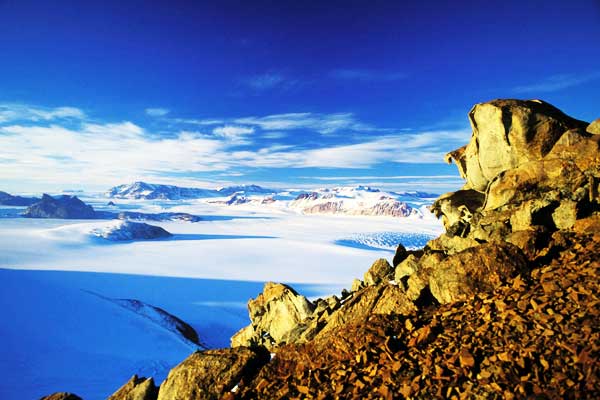Why Are Transantarctic Mountains So Prominent?
The Geological Forces Behind the Magnificence of Antarctica's Iconic Mountain Range
Transantarctic Mountains

The Transantarctic Mountains, a colossal and iconic mountain range in Antarctica, command attention with their towering peaks, dramatic landscapes, and sheer grandeur. These rugged mountains extend over 3,500 kilometers (2,175 miles) across the icy continent, creating a stunning natural boundary between East Antarctica and West Antarctica. But what makes the Transantarctic Mountains so prominent? In this comprehensive guide, we embark on an exploration of the geological forces that have shaped these majestic mountains into a natural wonder.
The Transantarctic Mountains: An Introduction
Before we unveil the geological secrets behind the prominence of the Transantarctic Mountains, let’s take a moment to appreciate the sheer magnitude and significance of this iconic mountain range.
The Transantarctic Mountains are renowned for their breathtaking beauty and geological significance. Their sheer size and prominence in the heart of Antarctica make them a mesmerizing feature of the polar landscape. These mountains are primarily composed of sedimentary rock, providing valuable insights into Earth’s geological history. Some peaks reach heights of up to 4,528 meters (14,856 feet) above sea level, making them a dominant feature in the region.
While their grandeur is unquestionable, understanding why these mountains are so prominent requires a closer look at the geological forces at play.
The Geological Forces Behind Prominence
The prominence of the Transantarctic Mountains is a result of a complex interplay of geological forces. These forces have been at work for millions of years, shaping the landscape into the captivating natural wonder we see today.
Let’s explore the primary geological forces that have contributed to the prominence of the Transantarctic Mountains:
Tectonic Uplift
Tectonic uplift is a fundamental geological process responsible for the creation of mountain ranges. In the case of the Transantarctic Mountains, the initial uplift began during the Late Jurassic period, around 160 million years ago. This period coincided with the separation of the supercontinent Gondwana.
As the supercontinent rifted apart, it created a tectonic boundary between East Antarctica and West Antarctica. The Transantarctic Mountains rose from the Earth’s crust as a result of this tectonic activity. The mountains’ gradual elevation over millions of years is one of the key factors behind their prominence.
Glacial Erosion
Glacial erosion is another crucial force that has sculpted the Transantarctic Mountains and Mariana Islands Mountainscontributed to their prominence. While the mountains may have begun forming during the Late Jurassic period, their remarkable growth and sculpting occurred more recently, during the Cenozoic era, approximately 23 million years ago.
During this time, Antarctica experienced significant glaciation, with immense ice sheets covering vast areas of the continent. The weight of these glaciers and the erosive power of moving ice played a pivotal role in shaping the landscape. Glacial erosion, including the carving of deep valleys and fjords, exposed the rugged peaks and contributed to the mountains’ prominence.
Rifting and Uplift
The process of rifting, or the separation of continental plates, has been instrumental in the creation of the Transantarctic Mountains. As East Antarctica and West Antarctica moved apart, the region between them became a zone of geological activity.
This rifting allowed molten material from the Earth’s mantle to rise, contributing to the uplift and formation of the mountains. The Transantarctic Mountains stand as a testament to the powerful geological processes that have shaped Antarctica and the surrounding polar region.
Continental Collision
Another significant geological event that contributed to the Transantarctic Mountains’ prominence was the collision between East Antarctica and West Antarctica. This collision occurred during the Eocene epoch, approximately 34 million years ago.
As these two landmasses came together, immense geological forces were unleashed, resulting in the uplift of the Transantarctic region. The collision not only created the mountains but also defined the geographical and geological boundaries of East and West Antarctica.
Prominence and Geological Significance
The geological forces that have shaped the Transantarctic Mountains into a prominent natural wonder also make them a geological treasure trove. The mountains are predominantly composed of sedimentary rock, which contains a wealth of information about Earth’s ancient past.
Geologists are drawn to the Transantarctic Mountains for their unique rock formations and the clues they provide about the planet’s history. Fossils of ancient plant life found in the sedimentary layers of the mountains reveal that Antarctica once had a milder climate, further underscoring the region’s geological significance.
Ongoing Geological Research
While much has been learned about the geological forces behind the prominence of the Transantarctic Mountains, ongoing research and exploration continue to provide new insights. The extreme conditions of Antarctica, including its harsh climate, remote location, and limited accessibility, make scientific study and exploration in the region challenging. However, advancements in technology, including satellite imagery and ice core analysis, have expanded our understanding of the mountains’ geological history.
Geological research in the Transantarctic Mountains is ongoing, with scientists and researchers continually uncovering new facets of the region’s geological story. As technology and knowledge continue to evolve, our understanding of the geological forces that have shaped this remarkable mountain range will undoubtedly deepen.
A Geological Wonder
The Transantarctic Mountains are more than just a stunning natural feature; they are a testament to the geological forces that have shaped our planet over millions of years. The mountains’ prominence is the result of a complex interplay of tectonic uplift, glacial erosion, rifting, and continental collision. These forces have created a natural wonder that captivates the imagination of scientists, explorers, and nature enthusiasts alike.
Visiting the Transantarctic Mountains is an opportunity to witness the geological forces at work and to appreciate the raw beauty of the natural world. It’s a journey into the heart of Antarctica, where the grandeur of the landscape reflects the incredible forces that have shaped it.
Conclusion
The Transantarctic Mountains, with their dramatic landscapes and towering peaks, stand as a testament to the enduring power of geological forces. Their prominence is a reflection of the Earth’s geological history, a story that unfolds through the ages and continues to captivate the scientific community.
As we’ve explored in this comprehensive guide, the Transantarctic Mountains are a geological marvel, shaped by tectonic uplift, glacial erosion, rifting, and continental collision. They are a living testament to the forces that have molded our planet and a captivating natural wonder in the heart of Antarctica.
Know More about Transantarctic Mountains.
Where Are The Transantarctic Mountains Located?
When Were The Transantarctic Mountains Formed?
Who Discovered The Transantarctic Mountains?
What Are The Tourist Places Nearest to The Transantarctic Mountains?
How To Reach The Transantarctic Mountains?





